Posts Tagged ‘hair transplant’
Tuesday, January 26th, 2010
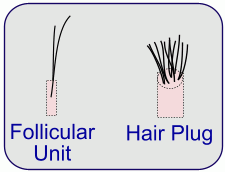
Q:
About 18 years ago, I underwent a hair restoration procedure with primitive technology. Nowadays, I’m very reluctant to ever do such a thing again. Since I had the transplant, I’ve been wearing a hair piece, which I don’t really like to do. I wonder: is it possible for my hair to ever look the way it did in my twenties? And, also, what if I don’t have enough donor hair, can I still get a hair transplant? If I don’t have enough donor hair, body hair is possible, right?
Also, I’m an algebra teacher, anyway this can be afforded on a salary like mine?
Sincerely,
-
A:
I appreciated the email. Here are my answers to your questions, in chronological order.
1. Most of the time, it can be corrected. A lot of our patients actually have needed repair hair transplants. Their situation was very similar to yours in that they had plugs or micro-graft surgeries.
2. Whether your donor hair is sufficient, I don’t know. I have to examine you for that. A good majority of people have enough hair to cover up a hair plug procedure. Some men have so much donor hair that they can even cover up other areas of hair loss.
3. It is plausible to use body hair, but it is much better to use head hair. If you’re in a situation in which you have virtually no scalp hair, and also high-quality body hair, you could be a good candidate for a body hair to head procedure.
4. I can’t tell you if your hair transplant surgery will be affordable right now. Only after I evaluate you. It’ll all be based on the number of grafts that you require. We offer discounted rates to qualified candidates on our standby program.
5. Make sure to attach photos of yourself and email them to me. The photos we need of your head are from the front, left and right sides, top and back. Make sure to also include a picture of the hair plugged areas of your head so I can take a better look at it.
After taking a look at your head shots, I’ll have a phone consultation with you and talk about the options that are open to you. It’s also a time where I can reply to all your questions.
Tags: donor hair, hair plug, hair restoration, hair restoration procedure, hair restoration surgery, hair transplant, hair transplant surgery, old hair plug, plug, repair hair plug
Posted in hair transplant, men hair restoration | No Comments »
Friday, January 15th, 2010

Not too long ago, consumer columnist David Lazarus, in a Los Angeles Times story, mentioned he had visited an open house at a hair transplant office and, to his surprise, saw that there were a lot of men who showed up. For him, it was unexpected. Lazarus said he had a conversation with the owner of the hair transplant center and learned that, in this fragile economy, a lot of men who are shopping for a hair transplant are thinking that it will better their job opportunities by having a full head of hair.
According to a CNN report, findings have shown that people who are better looking, or are slim (vs. fat), or who are of a younger age tend to have better success in the nation’s economy. These “lookers” bring in more money, have a better chance of moving up in the company, and tend to be treated more graciously. Albeit the results of this study may be a bit disturbing, it may be a somewhat accurate reflection of our society.
When we take into account these conclusions, it ought to come as no surprise that there are balding men in America who really hold fast to the idea that they can boost their chances of landing a job by sporting a full head of hair. It might just end up being a mental edge, or a self-esteem enhancer, for these adult males to give a good impression during their interviews.
All things considered, in my humble view, the crucial aspect of a job interview is a how a potential employee presents himself to his interviewer. The responses she gives, her demeanor, attitude about previous employers, and overall impression.
But, these days, some men believe it wouldn’t decrease their chances to have a full head of hair. In addition, due to the slumping economy, a hair transplant cost is at an all-time low for high-quality hair restorations. If there ever was a time to get a hair transplant for those who, under different circumstances wouldn’t get one, now is the time.
Tags: balding men, hair loss, hair loss and job prospects, hair restoration, hair transplant, job prospects, men hair loss
Posted in Bakersfield hair transplant, California hair transplant, hair transplant, men hair restoration, Newport Beach hair transplant, Orange County hair transplant | No Comments »
Tuesday, January 12th, 2010

In the past 30 years, alternate types of therapy for enhancing wound repair have been mentioned. For this entry, I wanted to talk about the cutting-edge areas of stem cell therapy and gene therapy in wound healing. When it comes to gene therapy, it was first put into practice for treating congenital defects. Now, it is a fresh alternative for affecting wound repair. To speed up the process of wound closure, genes encoded for growth factors or cytokines revealed the greatest potential.
Most gene delivery systems have roots in viral transfection, naked DNA application, high pressure injection, or liposomal vectors. Embryonic and adult stem cells posses an extended self-renewal ability with the capacity to differentiate into various tissue types. Different types of sources, such as bone marrow, peripheral blood, umbilical cord blood, adipose tissue, skin and hair follicles, have been used to separate stem cells to speed up the healing response of acute and chronic wounds.
Not too long ago, the grouping of gene and stem cell therapy has come to the forefront as a potential option to care for chronic and acute wounds.
For potential hair transplant patients, this breaking development about gene and stem cell therapy in hair restoration is fantastic news because a rapid healing from stitches in the donor area would make for a much quicker and painless procedure. There are all kinds of different types of hair loss, but, if a hair loss sufferer undergoes a hair transplant, it would be imperative that his stitches would heal quickly.
Source information was provided by the following authors: Branski LK, Gauglitz GG, Herndon DN, Jeschke MG.
Department of Surgery, The University of Texas Medical Branch and Shriners Hospitals for Children, Galveston, TX 77550, United States.
Tags: donor scar, gene therapy, hair loss, hair restoration, hair transplant, stem cell therapy, wound healing, wound treatment, wounds
Posted in Bakersfield hair transplant, California hair transplant, hair transplant, men hair restoration, Newport Beach hair transplant, Orange County hair transplant | No Comments »
Saturday, December 19th, 2009
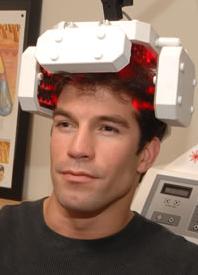
Hair transplant surgery has evolved in the last 10 years thanks to microscopic techniques and research which elucidated the mechanism of hair loss and hair restoration surgery. We now can transplant with maximum natural results. We also increased the number of grafts which could be safely removed and harvested during a single hair transplant procedure. Mega session hair transplants have been a very hot topic and an interesting idea for many people who have a large balding area that cannot simply be covered with anything less than 3000-4000 grafts.
At the offices of US Hair Restoration, we evaluate every patient for the quality of donor hair and scalp which will determine the number of grafts that could be safely harvested and transplanted in one surgery. Many people who are getting their first surgery can have over 3000 grafts. We have numbers of up to 5000 grafts, too.
Laser hair restoration is a pretty new concept and unfortunately we still do not have enough solid research published in peer reviewed journals documenting its effectiveness. There have been some results in smaller studies with some effect. However, I would rather wait on that until we have more research-proven documents in that regard.
You need to be evaluated for your donor potential and can consider surgery after that. US Hair Restoration has special hair transplant travel reimbursements for patients like you who have to fly from other cities. We also provide hotel and transportation to and from the hotel for anyone who has to commute more than 50 miles to get to our hair restoration center.
Tags: hair loss, hair restoration, hair transplant, hair transplant cost, hair transplant travel, hair transplant travel reimbursement, laser hair transplant, laser hair treatment
Posted in Bakersfield hair transplant, California hair transplant, hair transplant, men hair restoration, Newport Beach hair transplant, Orange County hair transplant | No Comments »
Wednesday, December 16th, 2009
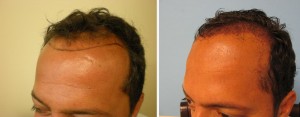 Before and After Pictures; First Day After Hair Transplant Well, on the first day we’re usually forced to kick out our patients from our office because they grow so fond of us and don’t want to leave! Well, not all the time. But our patients do like us, which is something we’re very proud of.
On a more serious note, I’ll say this: Transplanting hair is a very delicate and painstaking procedure. After a hair transplant is over, it is of utmost importance to constantly monitor and properly care for the transplanted area. US Hair Transplant’s policy is to book a patient for a hair washing the day after his or her transplant. The hair washing takes about half an hour. At our office, we use thick shampoo to clean the transplanted hair grafts. We make sure to be gentle and only spread foam and dab the transplanted area. After two minutes, we rinse off the shampoo with water.
During the first visit, another area we wash is the donor area. As a parting gift, we provide our patients with a sponge, which has a soft brush on one side. The brush is used to clean the donor area and the sponge for the transplanted area. When it comes to washing the donor area, a patient may use a bit of aggression as the wounds are stapled or sutured. The soft brush can be rubbed, ever so gently, on the back of the patient’s head to remove scabs and extra debris from the surgery.
Remember: hair washing ought to be done twice daily for first four days, after which it can be done once a day.
Because of dedication to patients, we teach them how to properly care for the transplanted area. The first four days are important, as the grafts in the transplanted area may dislodge if they aren’t washed with care. After the first four days, the patient can go back to washing his hair the way he did before surgery as the grafts, at this point, are most likely sealed and part of the person’s scalp even if the hair is moved. The remaining follicles are able to generate new hairs.
To prevent scabs, we urge our patients to wash hair using our particular technique. It’s important to note several studies have shown that scabbing may prevent transplanted hair growth. After seven days from day of surgery, there ought not to be any scabs. If scabs still appear after the seven days, it means washing wasn’t done the right way and the patient must start being a bit more aggressive in his washing technique.
After four days have passed, patients can wash their hair twice a day. In addition, patients ought to let the foam alone for ten minutes to let scabs soften. Afterward, patients can use the soft brush we provide to comb their hair in the direction of their other hairs.
Also we make sure to let our patients know to not dunk their head in water the first week after the transplant, and to try not to bend their head too frequently during the first month. Also, the first six months after surgery, we tell our patients to keep the transplanted area away from sunlight.
As time passes, the transplanted hair will grow and be able to protect the skin grafts from the sun’s ultraviolet rays.
Tags: after hair restoration surgery, after hair transplant, care after hair transplant, couple days after hair transplant, few days after hair transplant, hair transplant, hair transplants
Posted in Bakersfield hair transplant, California hair transplant, hair transplant, men hair restoration, Newport Beach hair transplant, Orange County hair transplant | No Comments »
Wednesday, November 25th, 2009

US Hair Transplant, a respected leader in hair restoration surgeries, will be holding a grand opening of a new San Diego Hair Transplant Center sometime in early 2010. With hair restoration centers already well established in Encino, Beverly Hills, and Orange County (Foothill Ranch), Dr. Parsa Mohebi and his staff plan on providing their self-image enhancing services to residents of America’s Finest City.
“San Diego is like a sister city of L.A. And I know from conversations with many of our patients that there is a demand for quality hair restoration clinics in the area” said Dr. Parsa Mohebi, Medical Director, US Hair Transplant, “People want to look their best, and at the same time, have a natural-looking appearance.”
US Hair Transplant currently serves a handful of San Diego-area residents, but establishing an office in the southern most part of the Golden State would, Dr. Mohebi says, be a more convenient resource for his clients, and also convey the message that US Hair Restoration is willing to branch out to meet the growing needs of its prospective clientele.
“Hair restoration is a wonderful solution and is a way for people with hair loss to feel good about themselves again, without compromising good health,” adds Reyes Mendoza, Public Relations, US Hair Restoration.
Beginning in the early 1990s, surgical hair restoration proved to be a successful solution for men and women suffering hair loss. Since then, modern technology and dedicated study by doctors and scientists involved in the hair transplant industry have made hair restoration a safe and rewarding option for people around the world.
Currently, due to the current state of the economy, US Hair Restoration is offering 20% off its standard cost of hair transplants and 0% financing for two years on a standby basis until December 31, 2009, to achieve their its goal of being able to provide quality hair transplants, with affordable prices of hair restoration, for all people. Hotel stay is provided for one night along with transportation to and from the hotel for anyone traveling over 50 miles to a US Hair Restoration office.
Tags: California hair transplant, california hair transplant center, hair transplant, hair transplant center, la jolla hair transplant, la jolla hair transplant center, poway hair transplant, poway hair transplant center, san diego hair transplant, san diego hair transplant center
Posted in California hair transplant, hair transplant | No Comments »
Tuesday, September 15th, 2009

As with any surgical procedure, you would have to worry about certain side effects or tedious maintenance. We are asked by every potential surgical patient, “When can I go back to work after my hair transplant surgery?”
Downtime doesn’t only apply to the amount of time you would spend away from your office or how soon you can return. This all depends on the type of work that you do, whether or not you can use a hat, how sensitive the issue of your hair transplant is and whether or not you want to keep it a secret.
We have a few follow up dates after the hair transplant surgery in our California Hair Transplant Offices and each must be completed. On the day after surgery, all patients must have a hair wash done in office to best instruct the patient. We make sure to clean the patient as thoroughly as possible without damaging the hair grafts in a professional and comfortable manner. We make sure the patient understands that scabbing and redness must be dealt with as soon as possible.
Patients are most concerned about how they will look the first few days. Redness and swelling are the most common side effect of the surgery and can last 4-5 days after the surgery. Patients can choose to wear a hat to cover the transplanted area from plain site.
On larger hair transplant cases, the swelling may actually progress to the eyebrow area or even the eyelids and under eyes. 5 to 6 days is all it should take for this kind of swelling to go down, generally. The swelling is most always triggered by large (2500 graft surgery) or mega-session (3000+ graft surgery) procedures but is almost undetectable on smaller cases.
The final concern or issue after hair transplant surgery is the visual aspect of the existing hair. Most cases, we trim the hair in both the recipient and donor area (0.5 to 2cm) and it will stay at about that length for 2 to 3 weeks. In about 90% of patients that undergo surgery, the transplant hair will fall out within the first 3 weeks. This means will look like they did before hair transplant surgery. By this point, there should not be any swelling or redness. Staples and/ or sutures are removed in less than 2 weeks after surgery and the transplanted hair follicles will then go into their resting phase until they are ready to grow again.
Tags: after hair restoration surgery, after hair transplant, complications, hair transplant, hair transplant surgery, high grade baldness, Los Angeles Hair Transplant Center, low grade baldness, male patterned hairloss, men hair loss, redness after hair transplant, swelling after hair transplant, us hair restoration
Posted in California hair transplant, hair transplant | No Comments »
Saturday, September 5th, 2009
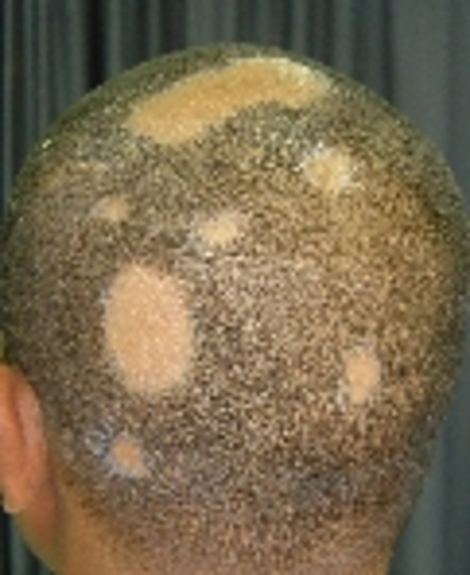 Alopecia Areata (AA) is an autoimmune hair loss condition. It presents itself in the form of patchy hair loss on the scalp or other areas where hair exists. Some have questioned if AA can also be triggered by emotional stress. It has been discussed in some medical journals but the exact mechanism has never been explored. There has been a study conducted and published on the relationship between stress and the pathogenesis of alopecia areata. This was done by subjecting AA-affected and normal lab mice to ether anesthesia (stress) through restraining the animal. Alopecia Areata (AA) is an autoimmune hair loss condition. It presents itself in the form of patchy hair loss on the scalp or other areas where hair exists. Some have questioned if AA can also be triggered by emotional stress. It has been discussed in some medical journals but the exact mechanism has never been explored. There has been a study conducted and published on the relationship between stress and the pathogenesis of alopecia areata. This was done by subjecting AA-affected and normal lab mice to ether anesthesia (stress) through restraining the animal.
The mice with alopecia areata had a marked increase in hypothalamic-pituitary-adrenal tone and activity centrally and peripherally in the skin and lymph nodes. Plasma corticosterone, adrenocorticotropic hormone, and estradiol levels were determined in this study as indicator or stress level, whereas gene expression in brains, lymphoid organs, and skin was measured by quantitative RT-PCR for corticotropin-releasing hormone, arginine vasopressin, proopiomelanocortin, glucocorticoid receptor, mineralocorticoid receptor, corticotropin-releasing hormone receptor types 1 and 2, interleukin-12, tumor necrosis factor-alpha, and estrogen receptors type-1 and type-2.
Compared to normal mice, there was an altered interaction seen between the adrenal and gonadal axis proving that the stress level in those animals was in fact higher. Stress also caused changes in the activity of the hypothalamus pituitary axis in the mice with AA.
In addition, animals with AA had significantly blunted corticosteroid and ACTH responses to acute ether stress (physiological stressor) and a deficit in habituation to repeated restraint stress (psychological stressor). These findings further suggest that altered brain responses caused by stress may be associated with the occurrence of alopecia areata, proving the hypothesis that stress plays an important factor.
Treatment of AA is done through observation of the patient and, in some cases, steroid injections can also prove useful. These treatment options have shown some improvement in those who have extensive types of AA like Alopecia Totalis. We do not recommend any patient to get hair transplant surgery if they have active AA since the chance of losing the newly transplant hair is very likely.
Although AA is not genreally treated with hair restoration, we at our offices of US Hair Restoration in LA, BH and Orange County visit and treat patients of AA in a regular basis.
Tags: AA, ACTH, adrenocorticotropic hormone, alopecia areata, alopeica totalis, arginine vasopressin, Avp, CORT, corticotropin-releasing hormone, estradiol, glucocorticoid receptor, hair loss, hair loss innovations, hair transplant, hair transplant surgery, lymphoid organs, mineralocorticoid receptor, proopiomelanocortin, RT-PCR, sress level
Posted in Beverly Hills hair transplant, California hair transplant, Los Angeles Hair Transplant, Orange County hair transplant | No Comments »
Saturday, August 29th, 2009
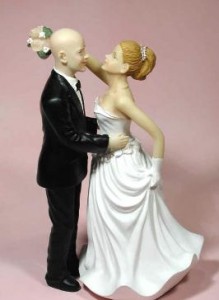 A patient sent us an email regarding his hair loss condition. He has male patterned baldness and it is still progressing. He already met with a dermatologist and had several studies done prior to the email and was even using Chronostim for approximately 3 months. Now that he’s used up the bottles of Chronostim, he has noticed no change is his hair loss situation. He wants to have a full head of hair and does not want to take hair loss medication for the rest of his life. Before we forget, his wedding is in 2 months. A patient sent us an email regarding his hair loss condition. He has male patterned baldness and it is still progressing. He already met with a dermatologist and had several studies done prior to the email and was even using Chronostim for approximately 3 months. Now that he’s used up the bottles of Chronostim, he has noticed no change is his hair loss situation. He wants to have a full head of hair and does not want to take hair loss medication for the rest of his life. Before we forget, his wedding is in 2 months.
Chronostim has not been clinically proven to correct or prevent male patterned baldness or any other form of hair loss. It should not be considered a replacement option for medications that have been both proven effective and FDA approved safe for consumption like Propecia (finasteride) DHT blocker.
We highly suggest that all patients experiencing any form of hair loss to be seen by a good hair transplant surgeon and have a miniaturization study done. If the condition is in fact male patterned baldness or androgenetic alopecia, finasteride should be a part of your everyday hair loss treatment plan.
Hair restoration surgery can restore the areas damaged by hair loss by transplanting healthy permanent hair from the donor. In this situation, however, neither of the aforementioned will make enough of a visible difference for the day of your wedding. These procedures take time to show their fullest effect. There are cosmetic options available like Toppik that can cover the balding or thinning areas of your hair through the use of microfibers. If anything, you can use that product for the wedding day while you either consider a hair transplant surgery or at least try using Propecia (finasteride) so that you may see true results a few months after your wedding.
Tags: balding prevention, chronostim, dht, finasteride, hair loss, hair loss product, hair loss treatment, hair transplant, hair transplant surgery, male patterned hairloss, men hair loss, toppik
Posted in hair loss medication, hair loss products, men hair restoration, Uncategorized | No Comments »
Sunday, July 12th, 2009
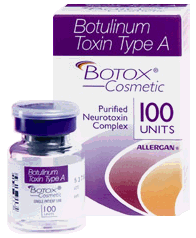 In a recent email, a patient is going to undergo an additional hair transplant and scar revision. He had done some research in regards to the use of BOTOX injections to help reduce the width of his scar and wonders where and why would you use BOTOX injection, how many units or CCs, and whether it would benefit him. In a recent email, a patient is going to undergo an additional hair transplant and scar revision. He had done some research in regards to the use of BOTOX injections to help reduce the width of his scar and wonders where and why would you use BOTOX injection, how many units or CCs, and whether it would benefit him.
BOTOX injection has been recently introduced to hair transplant surgery for the prevention of scar stretching. There have been a number of patients that have been studied but the research has a very limited number of test subjects. The main purpose of the research was to help compare the effects of BOTOX injection on scar width. One side was treated with BOTOX injection while the other is left alone and the results are recorded during their post hair transplant surgery follow up visits.
It is hard to conclude what the best dosage of BOTOX would be in and around the donor wound because of the limited findings reported. In a recent blog titled Botox Can Reduce Widening of Hair Transplant Scars found in US Hair Restoration Blog, BOTOX helps minimize tension present around the edges of the wound. This action helps collagen mature and the scar wound to form completely.
More studies need to be done to get a much more conclusive answer in regards to the number of units needed and how often BOTOX needs to be reapplied. Because of this, the amount of BOTOX injection needed must be determined by the individual surgeon. This can also change based on the length and size of the hair transplant donor scar. As a note, the injections should not be placed within the first week of post surgery due to the acute inflammatory reaction caused by surgery and should be repeated in 4 month intervals. Muscles tend to get their strength back within or after that time frame.
Tags: Botox, collagen, donor scar, hair transplant, hair transplant surgeon, wound maturation
Posted in hair loss medication, hair loss products, hair transplant | No Comments »
|
|










